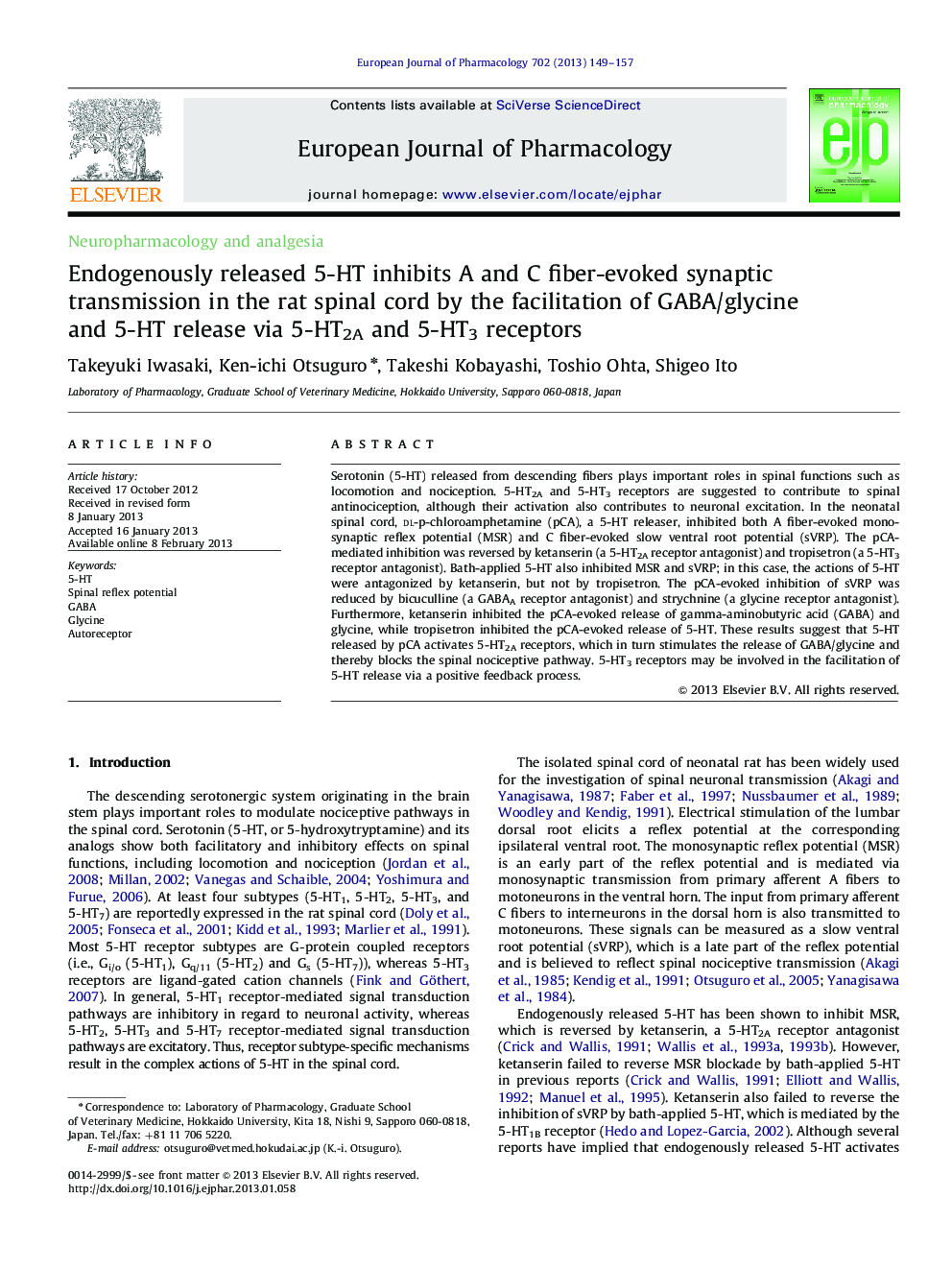| Article ID | Journal | Published Year | Pages | File Type |
|---|---|---|---|---|
| 5828682 | European Journal of Pharmacology | 2013 | 9 Pages |
Abstract
Serotonin (5-HT) released from descending fibers plays important roles in spinal functions such as locomotion and nociception. 5-HT2A and 5-HT3 receptors are suggested to contribute to spinal antinociception, although their activation also contributes to neuronal excitation. In the neonatal spinal cord, dl-p-chloroamphetamine (pCA), a 5-HT releaser, inhibited both A fiber-evoked monosynaptic reflex potential (MSR) and C fiber-evoked slow ventral root potential (sVRP). The pCA-mediated inhibition was reversed by ketanserin (a 5-HT2A receptor antagonist) and tropisetron (a 5-HT3 receptor antagonist). Bath-applied 5-HT also inhibited MSR and sVRP; in this case, the actions of 5-HT were antagonized by ketanserin, but not by tropisetron. The pCA-evoked inhibition of sVRP was reduced by bicuculline (a GABAA receptor antagonist) and strychnine (a glycine receptor antagonist). Furthermore, ketanserin inhibited the pCA-evoked release of gamma-aminobutyric acid (GABA) and glycine, while tropisetron inhibited the pCA-evoked release of 5-HT. These results suggest that 5-HT released by pCA activates 5-HT2A receptors, which in turn stimulates the release of GABA/glycine and thereby blocks the spinal nociceptive pathway. 5-HT3 receptors may be involved in the facilitation of 5-HT release via a positive feedback process.
Keywords
Related Topics
Life Sciences
Neuroscience
Cellular and Molecular Neuroscience
Authors
Takeyuki Iwasaki, Ken-ichi Otsuguro, Takeshi Kobayashi, Toshio Ohta, Shigeo Ito,
